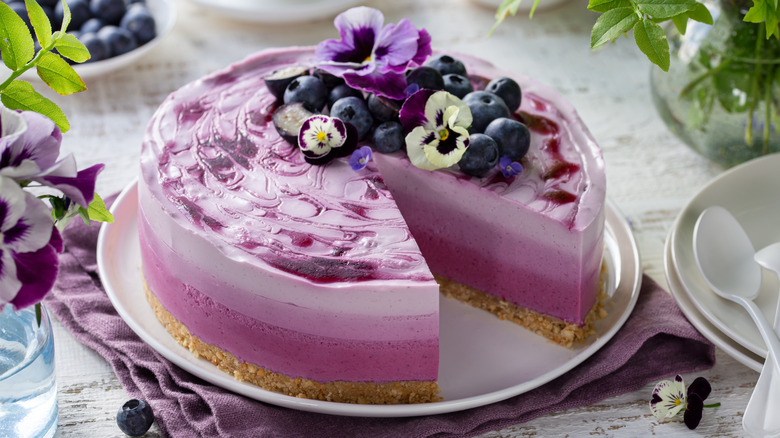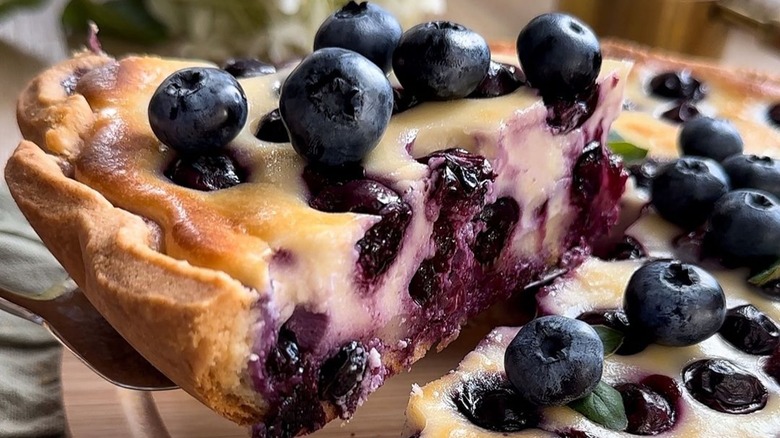How To Change The Color Of Your Blueberry Baked Goods
For many home bakers, the pleasure of baking derives from its precise nature. With meticulous ingredient lists, exact measurements, and controlled temperatures, we truly have exceptional baked goods down to a science. Blueberries, on the other hand, have been the finicky bane of many a baker's existence. They tend to sink, bleed, burst, and change colors as they bake, keeping our picture-perfect visions just out of reach.
The good news is that the same naturally occurring chemical that causes our confectionery woes can become a force for good — once you understand the science. Anthocyanins are pigment molecules found in plant cells (via Britannica). We have them to thank for some of our most brightly hued fruits and vegetables like raspberries, currants, cherries, rhubarb, and, of course, blueberries. Controlling the resulting color of this chemical compound when heat is applied comes down to one factor: pH.
By adjusting the pH level of your anthocyanin-rich ingredients, you can not only temper the most temperamental foods but have even more fun with a wider array of colors. The lower the pH, or the more acidic the anthocyanin-laden food, the redder the hue. As the pH increases, becoming less acidic and more basic, the pigment shifts to purple, then blue, then green, and finally yellow. Now that you know the formula, you can experiment to your heart's content.
Changing the color of your blueberry baked goods
For pastries with a pink or reddish hue, just add an acid (citric acid or lemon juice will do the trick). If you add just a dash, lemon juice is also an excellent way to make the blue of your blueberries pop while at the same time upping the flavor of your baked goods. Moving up the pH scale to more basic ingredients will result in greener shades (as anyone who has blended dairy and blueberries in the same smoothie will know). Adding baking soda does the same basic trick, but be careful: Too much baking soda will leave a metallic taste in your mouth that even blueberries can't overpower.
If too much chemistry takes the joy out of your cozy kitchen traditions, don't worry. Generations of home bakers have corralled the unruly blueberry without reference to the pH scale. Although the tastiest in-season blueberries can't be beat, bakers hoping for a streak-free muffin can find an ally in the freezer aisle. Rinse the frozen berries thoroughly and pat them dry before gently stirring them into your batter (making sure to add them before they have time to defrost). Whether you're using fresh or frozen, over-mixing your batter is the quickest road to color bleed.

